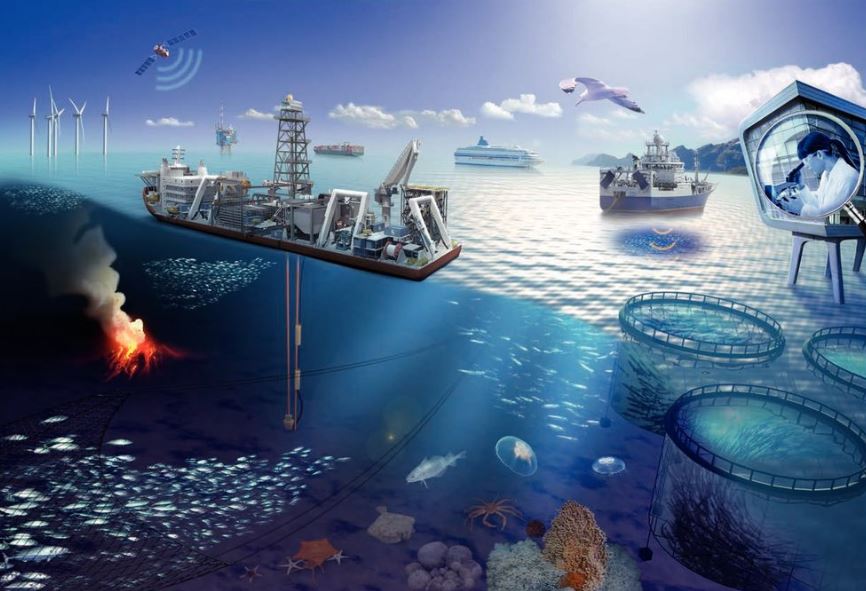Font size:
Print
Myanmar Earthquake 2025
China, India, and Myanmar’s Shaky Corridors
Context: On March 28, 2025, Myanmar was struck by a devastating 7.7-magnitude earthquake, with its epicentre located in the Sagaing Region near Mandalay—the country’s second-largest city.
More on News
- Since the initial tremor, over 67 aftershocks have been recorded, severely impacting 17 million people across 57 townships.
- More than 9 million individuals are in critical condition, intensifying the already dire humanitarian crisis.
- As of April 6, the disaster has claimed at least 3,471 lives, injured over 4,671 people, and left 214 missing.
- The United States Geological Survey (USGS) has projected a 35% likelihood that the death toll could range between 10,000 and 100,000, and a 33% probability that fatalities may exceed 100,000.
- Economic damage could surpass US$10 billion—amounting to nearly 70% of Myanmar’s GDP.
Myanmar Declares Emergency: Global Aid Mobilised
- Emergency Zones: In the aftermath, junta leader Min Aung Hlaing declared six regions, including Sagaing, Mandalay, and Magway, as emergency zones.
- He extended an “open invitation” to nations and organisations for humanitarian support.
- India, China, the United Kingdom, the United States, and Singapore responded swiftly with medical personnel, financial aid, and relief materials.
- China: China pledged the largest contribution—US$14 million in humanitarian assistance.
- UN and Other: Meanwhile, UN agencies and humanitarian partners have allocated US$15 million in emergency aid.
- BIMSTEH: The crisis also took center stage at the sixth Bay of Bengal Initiative for Multi-Sectoral Technical and Economic Cooperation (BIMSTEC) Summit on April 4, where leaders issued a joint statement promising support.
Massive Infrastructure Damage in Myanmar
- The earthquake left widespread structural destruction in its wake.
- Roads, bridges, residential areas, and heritage landmarks have suffered extensive damage.
- Notable sites affected include the Mahamuni and Ananda Pagodas, the Sky Villa, and the University of Mandalay.
- The 90-year-old Ava Bridge over the Irrawaddy River has collapsed, severing a critical link between Sagaing and Mandalay.
- Many religious monuments, including Ma Shi Khana Pagoda, were also damaged.
Impact on China-Backed Infrastructure Projects
- China holds major economic and strategic stakes in Myanmar, primarily through the China-Myanmar Economic Corridor (CMEC), part of the Belt and Road Initiative.
- Key investments include: Letpadaung Copper Mine, Tagaung Nickel Plant, Alpha Cement Plant (Madaya Township), China-Myanmar Oil and Gas Pipelines and Muse-Mandalay-Kyaukphyu Railway (planned).
- Many of these projects run through quake-affected areas like Mandalay and Magway, raising concerns about delays and damage.
- Joint Security Operations: Following the October 2024 attack on the Chinese consulate in Mandalay, China and Myanmar formed a joint security company to protect Chinese interests.
- However, the earthquake revealed that such measures cannot guard against natural disasters.
- Of China’s 34 major projects in Myanmar, 23 are now in territories controlled by Ethnic Armed Organisations (EAOs), further complicating security and logistics.
- With post-ceasefire infrastructure acceleration efforts underway since January 2025, including Chinese Ambassador Ma Jia’s recent visit to Shan State, the earthquake’s disruption could derail China’s investment timelines and strategic ambitions in the region.
Indian Projects Also at Risk
India, Myanmar’s fifth-largest trade partner and 11th-largest investor, has crucial economic interests tied to connectivity and energy projects.
- India-Myanmar-Thailand Trilateral Highway (IMT-TH): This flagship connectivity project runs through heavily affected areas like Mandalay and Sagaing.
- Infrastructure damage, including highway collapses and flooding from a broken dam, suggests significant delays—especially for already incomplete sections like Kalewa–Yagyi.
- Numaligarh Oil Export Route: India’s Numaligarh Refinery Limited exports oil via a 421-km route from Assam to Moreah, which connects to Sagaing.
- The route may have been impacted by the earthquake, though detailed assessments are pending.
- Kaladan Multi-Modal Transit Transport Project: While largely unaffected directly, this project—running through Sittwe Port and Paletwa—could still suffer delays due to broader instability.
Ongoing Conflict and Natural Disasters: A Double Blow
- Myanmar’s political instability, marked by Operation 1027 and increased military resistance, remains a major obstacle.
- Research indicates that natural disasters in fragile states often escalate ongoing conflicts.
- Within five days of the quake, the military conducted 32 airstrikes in 11 areas, including Sagaing and Mandalay, killing 50 and injuring 49 civilians.
- The compounded impact of conflict and natural disaster puts major foreign infrastructure projects at risk.
Rising Debt and Rebuilding Challenges
- Myanmar’s rebuilding efforts will likely require substantial foreign loans, pushing the nation into deeper debt.
- According to the 2024 International Debt Report:
- Total external debt stands at US$12.1 billion
- Japan is the largest creditor (36%) through ODA and concessional loans
- 28% is owed to multilateral institutions (World Bank, ADB)
- 15% to private lenders
- 6% to China
- New borrowing could heighten financial vulnerability, especially if reconstruction efforts stall due to ongoing instability.


